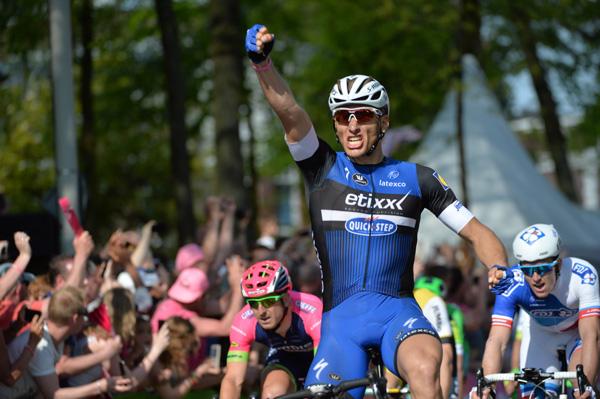- News
- Reviews
- Bikes
- Accessories
- Accessories - misc
- Computer mounts
- Bags
- Bar ends
- Bike bags & cases
- Bottle cages
- Bottles
- Cameras
- Car racks
- Child seats
- Computers
- Glasses
- GPS units
- Helmets
- Lights - front
- Lights - rear
- Lights - sets
- Locks
- Mirrors
- Mudguards
- Racks
- Pumps & CO2 inflators
- Puncture kits
- Reflectives
- Smart watches
- Stands and racks
- Trailers
- Clothing
- Components
- Bar tape & grips
- Bottom brackets
- Brake & gear cables
- Brake & STI levers
- Brake pads & spares
- Brakes
- Cassettes & freewheels
- Chains
- Chainsets & chainrings
- Derailleurs - front
- Derailleurs - rear
- Forks
- Gear levers & shifters
- Groupsets
- Handlebars & extensions
- Headsets
- Hubs
- Inner tubes
- Pedals
- Quick releases & skewers
- Saddles
- Seatposts
- Stems
- Wheels
- Tyres
- Health, fitness and nutrition
- Tools and workshop
- Miscellaneous
- Cross country mountain bikes
- Tubeless valves
- Buyers Guides
- Features
- Forum
- Recommends
- Podcast
 Marcel Kittel (ANSA - PERI, DI MEO, ZENNARO).jpg
Marcel Kittel (ANSA - PERI, DI MEO, ZENNARO).jpgVideo: how to win a sprint
You’re the team sprinter, you’ve made it through the mountains and you’re heading for the finish, and a possible stage win. What do you need to do to win?
According to Eurosport there are four factors to a successful sprint: speed, acceleration, position and team support in the last km, and they've done a little video to illustrate this.
In an ideal situation a sprinter’s lead out train will sit in front of their man to reduce wind resistance, as in a team time trial, setting the pace until the crucial few metres before the finish line. Eurosport’s video suggests wind resistance decreases down the line, though others say the third position of four is best as resistance can also come from turbulence and a slight negative air pressure to the rear of riders.
Giro d’Italia Stage 2: Marcel Kittel wins ahead of Arnaud Démare (+ highlights)
Either way, with around 500m to go team members, and finally the lead out sprinter, fall back, leaving their man to battle for the line, along with other teams’ sprinters. In the clip Eurosport uses, Marcel Kittel battles opponents to win stage 2 of this year's Giro D’Italia into Nijmegen.
Timing is crucial. Riders must choose the exact moment to launch the final acceleration; too soon and they could burn out, too late and they may not gain the acceleration to beat their rival to the line.
Pushing until you’re over the line may sound obvious but it’s something Cavendish said after winning stage 3 of this year’s Tour: where Andre Greipel stopped just before it, Cav pushed for that tiny bit longer, securing him those crucial millimetres ahead of his rival.
Of course this equation assumes all sprinters are created equal, which they aren’t. As one forum commentator put it of the Eurosport vid: “Ultimately in that sprint Kittel is by far superior to everyone around him and that's why he wins. The positioning helps, the leadout helps, etc, but he's just a superior sprinter. The FDJ sprinter [Arnaud Demare] was in ideal position but simply couldn't make it work, he was 100% outclassed by Kittel's jump.
“This year, with the Tour sprints being much more full out (and therefore forcing the sprinter to "race in the wild" so to speak), Kittel has had a harder time."
Cav & team introduced to kids they've helped with bikes
In practise it isn’t always possible for your team to lead you to the line – a lot can happen in a stage race, as we’ve seen during this Tour de France, from side winds to street furniture scattering teams in those final metres. Riders like Mark Cavendish and Peter Sagan are expert ‘freelancers’, able to follow whichever wheel they need to, and sheltering behind other riders until that key moment of attack. It’s an extremely tactical part of a race, in which everything can rest on a fraction of a second, which is what makes it so exciting.
Laura Laker is a freelance journalist with more than a decade’s experience covering cycling, walking and wheeling (and other means of transport). Beginning her career with road.cc, Laura has also written for national and specialist titles of all stripes. One part of the popular Streets Ahead podcast, she sometimes appears as a talking head on TV and radio, and in real life at conferences and festivals. She is also the author of Potholes and Pavements: a Bumpy Ride on Britain’s National Cycle Network.
Maybe... I was taking a slightly wider interpretation, just *bringing* Nazis and Hitler into an argument
Ear, ear!
Presumably not featuring the miserable- looking pair who've been made to wear their kit?
I have a NordVPN sub for using WiFi when travelling. ...
There's a lot about, and once you're "woke" or sensitised to it it's hard not to see it. However I think it's essentially a category difference if...
Good point. Although are they organised? Also fruitcakes have something to be said for them, even if they're a bit nutty.
As a summary - hopefully we can do both eg. small but more achievable things that are slightly helpful for the cyclists of today....
Great film, that.
I'm really not sure. It was always a road I used on the bike because it is a fair bit quieter than the alternatives. There is often poor driving in...
Bonus video, and a police driver: https://www.bbc.co.uk/news/articles/c98yr0z9r1ro